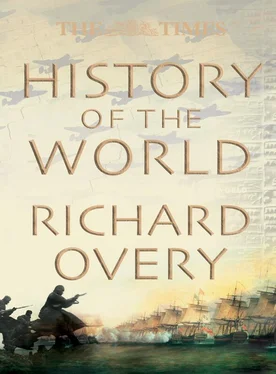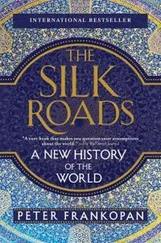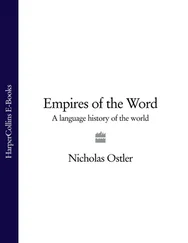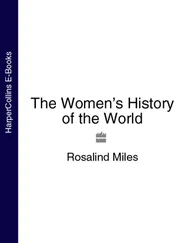1600–1000 BC
THE NEAR EAST
The period after 1600 BC saw the fertile lands of Mesopotamia and the Levant become the battleground between rival empires: Hittites, Mitannians, Assyrians, Babylonians, Elamites and Egyptians. After 1200 BC, however, these powers collapsed in a dramatic sequence of events that is still not fully understood by historians. The resulting two centuries of upheaval marked the end of the Bronze Age in the Near East.
Much of the detailed knowledge of the relationships between the warring empires comes from the “Amarna letters”. This collection of documents written in Akkadian (the international language of diplomacy in this period), consists of correspondence between the Egyptian pharaohs Amenophis III, Akhenaten and Tutankhamun (1390–1327 BC) and the rulers of the other great powers. The letters reveal the dynastic marriages and gift-giving that typify relations between rulers: the personal and the political were intimately bound together.
The most important new power in the region was the Hittite empire in central Anatolia. The Hittites had been expanding their power from their centre at Hattushash since the reign of Hattusili I ( c. 1650–1620 BC). Mursili I ( c. 1620- c. 1590 BC) led an expedition that destroyed Aleppo and Babylon, but it was Tudhaliya I ( c. 1420–1400 BC) and Suppiluliuma I (1344–1322 BC) who made the Hittites an imperial power. The empire consisted of a large number of small territories governed by client kings who owed their position entirely to the “Great King” who ruled from the capital, Hattusa. Client rulers were required to raise troops for the king’s campaigns, and to provide labour and goods for the central administration. They were often bound to the king by marriage ties.
The Hittites faced frequent pressure on their borders from Arzawa to the west and the Gasga to the north, but their biggest rivals were Egypt and the kingdom of Mitanni to the south. Mitanni first appears in the historical record in c. 1480 BC, when its ruler, Parrattarna, is described as controlling Aleppo. For the next 140 years Mitanni was a major power, controlling Assyria by 1400 BC. Mutual concern about Hittite power saw an alliance between Mitanni and Egypt, and the last independent ruler of Mitanni, Tushratta, married his daughter to Amenophis III and, after the pharaoh’s death, to his son Amenophis IV (Akhenaten). Tushratta was assassinated in c. 1340 BC, and his son Shattiwaza was installed as a vassal of the Hittites. Hostility continued between the Hittites and the Egyptians, leading to the great but inconclusive battle of Kadesh in 1275 BC between the pharaoh Rameses II (1279–1213 BC) and the Hittite king Muwatalli (1295–1271 BC).
Assyrian expansion began under Ashur-uballit I (1353–1318 BC), as Mitanni began to collapse under Hittite pressure. Adad-nirari I (1295–1264 BC) seized what was left of Mitanni from the Hittites, and Assyrian power grew to its greatest extent in the reign of Tikulti-ninurta I (1233–1197 BC), who conquered Babylon and installed a series of puppet rulers. Up until then Mesopotamia had been through a period of stability, ruled from Babylon, which came under the control of the Kassites in c. 1595 BC. Little is known about their origins, but they were noted for their horses and chariots, and maintained power for four centuries.
The Assyrian attack on Babylon led to counter-attacks from Elam to the southeast. The Elamite kings Kiden-Hutran ( c. 1235–1210 BC) and Shutruk-Nahunte (1185–1155 BC) led campaigns into Mesopotamia, the latter capturing Babylon. Despite a Babylonian revival under Nebuchadnezzar I (1126–1205 BC), the general upheaval that brought an end to the Bronze Age saw both Babylon and Elam more or less disappear from the historical record within a few years.
Around 1200 BC there was a wave of destruction throughout the eastern Mediterranean from Greece to Syria and Palestine. Fifty years later several cities in Mesopotamia were also destroyed. There are reports from the city of Ugarit of attacks from the sea, and the Egyptian pharaohs Merneptah (1213–1203 BC) and Rameses III (1184–1150 BC) describe battles with “sea peoples”. Although this obscure group was once considered the cause of widespread destruction it is now thought that they were merely taking advantage of a widespread breakdown in political organization. Earthquakes, drought, interruption to the supply of metals, and many other things, have been suggested as the cause of the collapse. It is likely that no one explanation will suffice, and that a number of external factors, combined with the fragility of the centralized power structures of the Bronze Age kingdoms, led to the dramatic end of the civilizations of the Bronze Age.
300 BC TO AD 1300
PEOPLES OF SOUTH AMERICA AND
THE CARIBBEAN
By 300 BC most people in South America had become farmers, although some hunter-gathering persisted in the southern part of the continent where farming was difficult. By 750 BC, complex societies were developing in the Andes. As in Mesoamerica, they went through phases of growth and decline, but in the central Andes there was a degree of cultural unity in that artistic differences between the highlands and lowlands were not as marked.
SOUTH AMERICA
The coast of the central Andes is best known, archaeologically, for the graphic pottery of the Moche, dating from AD 100 to 600. It reveals much about daily life and religion. The Moche were the first to assert themselves more widely by conquest. Both pottery and tombs show that, like their contemporaries in Mesoamerica, Moche kings exhibited their authority in elaborate rites.
Yet from about AD 600 the coast succumbed to conquest from the Tiahuanaco and the Huari. Both these civilizations developed elements of the earlier Chavín cult ( see p. 19). The city of Tiahuanaco was centred on the Titicaca Basin in Bolivia where the people grew potatoes and herded llamas and alpacas. Renowned for their stone buildings and sculpture, their expansion seems to have been achieved through the establishment of religious and commercial colonies. The reasons for its collapse about AD 1200 are not fully understood, but may have been related to climate change that affected agricultural production. The Huari are often considered to have been the precursors of the Inca. Among the hallmarks of Huari civilization was a network of roads and logistical, perhaps administrative, bases. Following two centuries of political fragmentation, the Moche tradition was revived among the Chimú, consummate engineers who developed vast irrigation systems. They controlled parts of the Andean coast until their destruction by the Incas ( see p. 143).
In the northern Andes and southern Central America, along the Amazon and in the plains southwest of the Amazon, there were other large populations. Much of the most telling evidence for them is in the form of extensive field systems. In northwestern South America chiefdoms had emerged, and in the southernmost parts of Central America superb sculpture, goldwork and pottery indicate powerful patrons.
THE CARIBBEAN
There is some evidence that peoples exploiting wild food resources occupied Cuba, Haiti and the Dominican Republic about 4000 BC. However, it was between 500 and 250 BC that farmers began migrating to the Lesser Antilles and Puerto Rico from the Orinoco and other rivers in northeast South America. They introduced the cultivation of manioc (cassava) and brought with them dogs and a distinctive red and white pottery known as Saladoid. Between AD 500 and AD 1000, the population in these islands expanded and spread to parts of the islands of Hispaniola (today Haiti and the Dominican Republic), Cuba and Jamaica. Most of these people were probably Arawak speakers. With population growth the societies became more complex and chiefdoms emerged. These people were later known as Tainos.
Читать дальше










